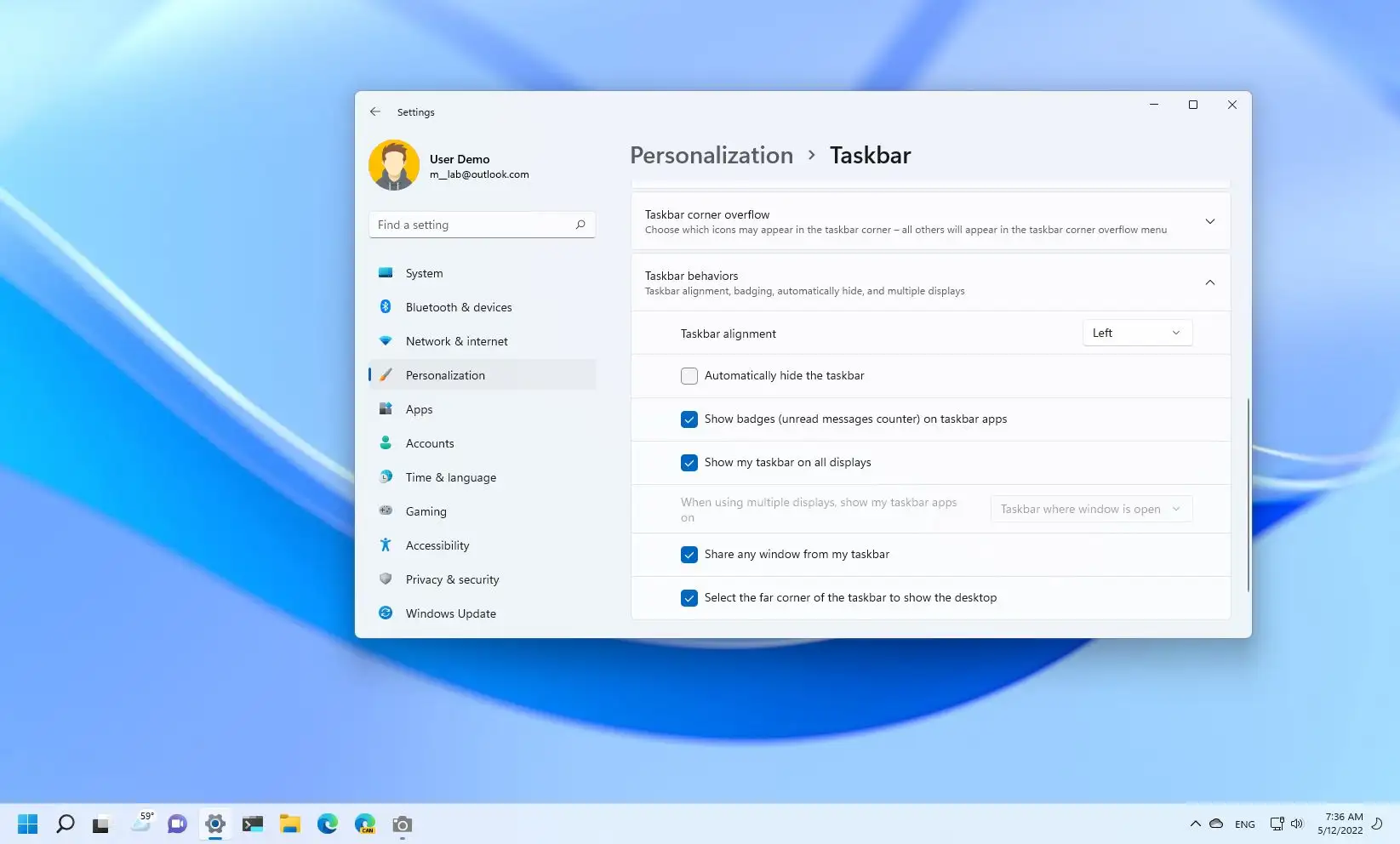On
Windows 11
, you can move the Taskbar to another monitor, but it’s not as easy anymore. Although on
Windows 10
, you could unlock and drag the Taskbar to the display you want, the option is no longer available on Windows 11.
However, if you still want to move the Taskbar to a second monitor on a multi-monitor setup, you can do this using the “Display” settings.
In this
guide
, you will learn the steps to move the Taskbar to a second monitor on Windows 11.
-
Move Taskbar to second monitor on Windows 11
-
Show Taskbar on all monitors on Windows 11
Move Taskbar to second monitor on Windows 11
To move the Taskbar to another monitor, use these steps:
Open
Settings
.
Click on
System
.
Click the
Display
tab.
Select the monitor to move the Taskbar.
Click the
Multiple displays
setting.
Check the
“Make this my main display”
option.

(Optional) Click on
Personalization
.
Click the
Taskbar
tab.
Click the
Taskbar behaviors settings.
Clear the
“Show my taskbar on all displays”
option to show it only on one display.

Once you complete the steps, the Taskbar will appear on the monitor you want. However, the system will make it the primary monitor, meaning that apps will launch by default on this display.
Show Taskbar on all monitors on Windows 11
To show the Taskbar on all monitors, use these steps:
Open
Settings
.
Click on
Personalization
.
Click the
Taskbar
tab.
Click the
Taskbar behaviors
settings.
Check the
“Show my taskbar on all displays”
option.

After you complete the steps, the Taskbar will appear on all monitors without changing the display settings.
In addition, the
clock will also show across all monitors
. It’s important to mention this because, originally, the Taskbar only showed the date and time on the primary screen, and many users had to use third-party tools to show this information across screens.
